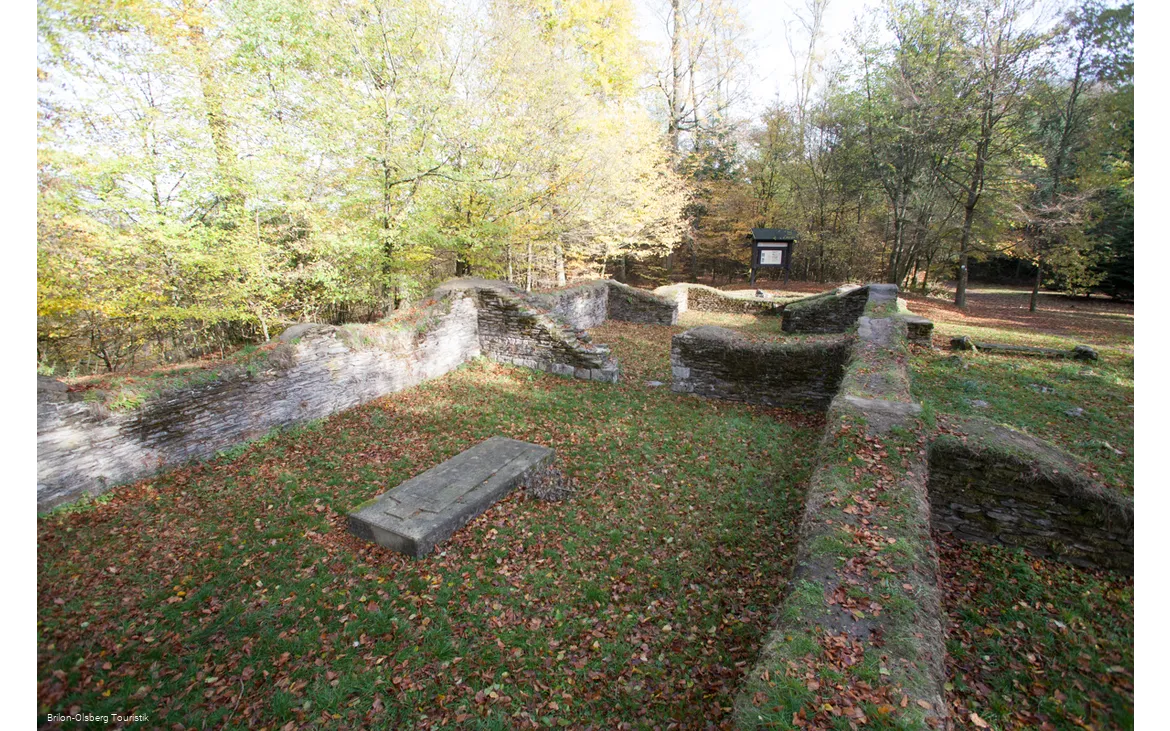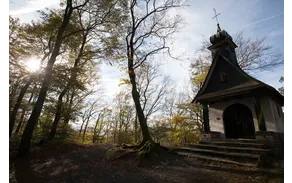Borberg
Brilon-Petersborn Elleringhausen (51.355981 | 8.530338)
Mourning and redemption
Wooded mountain peak (670 m) with early medieval rampart and burial site, peace oak and Friedenskapelle.
The path leads through a kind of gate. To the left and right, a mighty rampart of carefully stacked flat slate stones once protected those seeking shelter from attackers. A second gate follows for safety. We enter a wide high plateau. Suddenly, Dagmar Bereiter, who has led me up the Borberg with her husband Jochen, stops and says: "Phew, I'm getting goosebumps." I look at my arms: the same for me! At the same time, I notice that not a single bird's voice can be heard. Except for a raven making a lonely round around the mountain with a hoarse call. Jochen points to an oak tree that dominates the square in front of us: "It has seen a lot of suffering in the course of its life." I realize that soulful places can trigger very different resonances. Feelings of grief are also part of this.
Dagmar, a Kneipp practitioner and qigong teacher, obviously has a special feeling for energy. "I can feel it on the Borberg: Many people have died up here, many have been buried." The almost two-hectare plateau on the Rothaarsteig, surrounded by mixed forest, was a hill fort in the 8th century where people from the surrounding villages fled to when enemies were approaching. They took everything they needed to survive on the mountain for many months if necessary, household goods and seeds, cows and chickens. They even managed to get hold of vital water at this altitude. Jochen scrapes an iron plate free with his feet, which covers the former well: "They must have dug many meters deep before they came across water."
He talks about Charlemagne, who had his palace nearby in Marsberg on the Eresburg, but often came to the 600-metre-high Borberg because he could see far into the Ruhrtal from here. A medieval emperor enjoying the view? "No, he was interested in the strategic advantages. You could spot approaching units of enemy Saxons from afar. And position your own soldiers accordingly."
800 years later, in times of war again, this time the Thirty Years' War, the mountain once again became a place of refuge. The plague ravaged the people in the valleys. The dead were taken to the high plateau and buried there. Even the robbers, murderers and other "disgraceful" people. Out of sight, out of mind. Blood-soaked earth as a place of power? Dagmar says: "Many places draw their power from events that were violent and were later healed."
This transformation began on the Borberg in 1925, when people of faith wanted to overcome the horrors of the First World War and reconcile Germans and French, the arch-enemies. A chapel was built and dedicated to the "Queen of Peace Mary". The Peace League of German Catholics invited people to rallies and joint prayers year after year. The Neheim-born priest Franz Stock, who had already campaigned for international understanding as a young man, planted an oak tree in the middle of the high plateau in 1931, together with people from many countries who had been involved in the First World War. A natural monument to growing charity.
Does a place have to evoke cuddly feelings to be considered a "place of the soul"? My two companions say no. "Loss and grief are part of our lives," says Jochen. And Dagmar adds: "If we are prepared to consciously feel the pain, it can be transformed into positive energy." This transformation seems to have taken place on the Borberg: The experience of violence became a longing for peace.
This awareness is what they focus on when they lead groups of people through the Sauerland landscape. They encourage people to pause and take in their surroundings with all their senses. Does the rustling in the treetops here sound any different than ten meters away? Why did this beech tree grow straight up and the one next to it veer to the right? How does the ground feel under your feet? Ultimately, it's not about the landscape. It is just a mirror. To see yourself in it again or to discover completely new sides to yourself. A mountain as a mirror of the soul.
Author: Michael Gleich
Borberg
Moss covers the old stones
Silence presses on the graves of the forgotten
The sick, the afflicted, the unhappy
Souls in intermediate worlds
The tiny light of hope
Penetrates from the past to the present
A call for reconciliation and peace
Marlies Strübbe-Tewes
A natural monument for growing charity.
Michael Gleich







